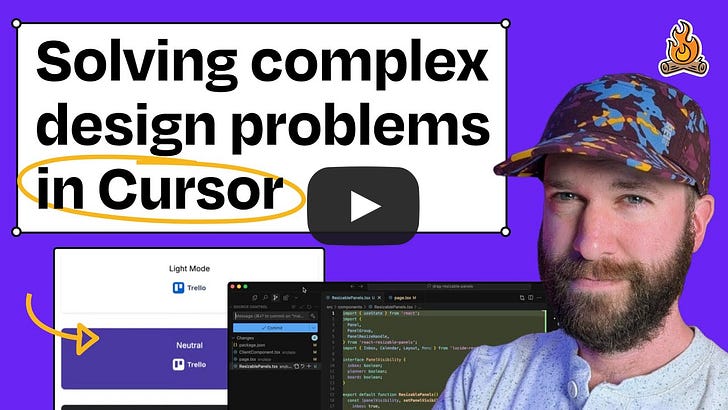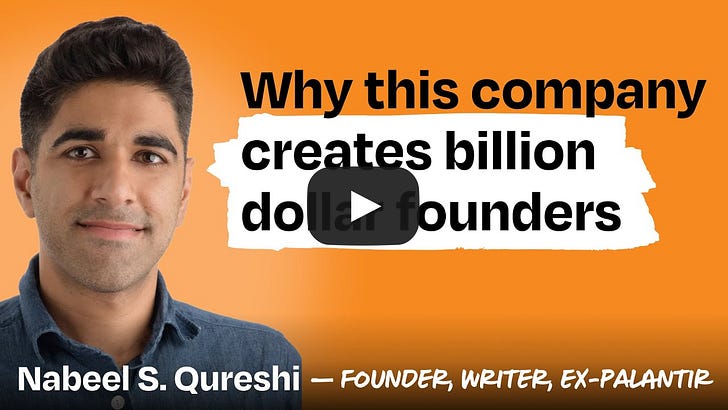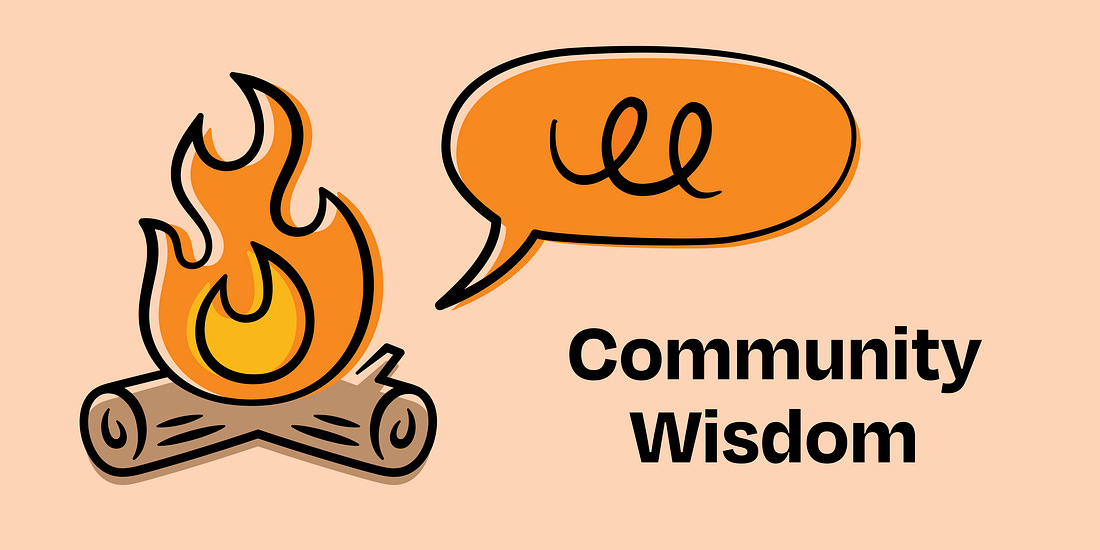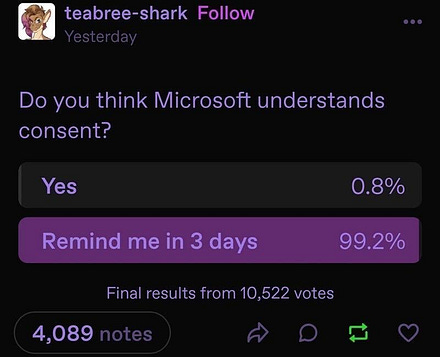🧠 Community Wisdom: When to hire a designer and have a design system, collecting feedback from support, how to ma…
👋 Hello and welcome to this week’s edition of ✨ Community Wisdom ✨ a subscriber-only email, delivered every Saturday, highlighting the most helpful conversations in our members-only Slack community. A big thank-you to this month’s community sponsor, Merge. Merge makes integrating with your customers’ software vendors easy. Add hundreds of integrations to your B2B SaaS products, with unified APIs for file storage, ticketing, CRM, ATS, HRIS, and accounting. AI companies love Merge because it delivers instant, secure access to clean customer data that powers their solutions. Stop wasting countless engineering hours staying ahead of breaking API changes and digging through a backlog of integration support tickets. Merge handles the full integration lifecycle so you can focus on what matters most: building your core product! ✨ Upcoming community meetups ✨Upcoming community-organized meetups—click the city name to RSVP:
Can’t find your city and want to host one? Just DM @Riya in our Slack. It takes 10 minutes (i.e. pick a date and location), and you get to meet awesome people from our community. Learn more here. 🎙️ New podcast episodes this weekHow Revolut trains world-class product managers: The “local CEO” model, raw intellect over experience, and a cultural obsession with building wow products | Dmitry Zlokazov (Head of Product): YouTube // Apple // Spotify  A designer’s guide to AI: Why designing in Cursor lets you prototype 10x faster, simplifies collaboration, and accelerates getting ideas out of your head | Joel Unger: YouTube // Spotify // Apple  How Palantir built the ultimate founder factory | Nabeel S. Qureshi (founder, writer, ex-Palantir): YouTube // Apple // Spotify  💥 Top threads this week1. When to hire a designer and have a design system
Alex Danilowicz: Hi Juan, I used to sell/build a product that was a design system manager. Think Storybook on steroids. This meant it was my job to try and find which companies were looking to introduce a design system to their organization. (Spoiler: it’s a very small market and very difficult to find companies in that “inflection point,” and so this company became Magic Patterns, an AI prototyping tool instead.) So to answer #2: The companies about to introduce a design system were usually:
Are you asking because you’re thinking about adopting a D.S.? Happy to answer more questions. Of course, it can vary. I worked as an engineer tangential to the design systems team at a big co., and they didn’t introduce a design system until they were already a public company! We also know several startups that had a custom design system on day 1 because they preferred it that way! —Hope this helps! Călin: Hey Juan. Not a SaaS founder, but I’m a fractional designer working with a lot of early-stage startups. Full-time hires are rare at such an early stage. Most companies use fractional contributors until seed or series A. It’s good to start shaping a design system early and evolve it. Typically I see startups getting by without a designer until they raise a seed round, at which point they redesign/refactor their POC/v1 product and lay the foundation of a design system Călin: Quick note on design systems: don’t formalize too much too fast. Get the basics in place and you can “generalize” other components later as it becomes clearer what’s the best way to do it. You don’t want components like swiss army knives that kinda do everything but don’t do it well. That’s what kills design sysems. People start detaching components because they don’t do what they need them to do and things get messy Juan Enciso-Bahamon: @Alex Danilowicz thank so much! your answers was super generous. So here’s the situation Im in: I have 5 apps to manage, 5 engineers and 1 designer. Apps don’t have a DS but here’s the catch: I only have one designer. Im trying to figure put what’s the best approach here. Juan Enciso-Bahamon: @Călin thanks for the wisdom. What would be for you the basics? Călin: If those 5 apps need to look cohesive, you need a system. Don’t need to boil the ocean. Start with the basics
Juan Enciso-Bahamon: @Călin thanks! so you would chunk the work in those 4 phases, correct? Călin: Consult with your devs on that. From a design POV you need all to maintain consistency and have all the tool devs need but if you implement them in 4 steps, that’s fine Juan Enciso-Bahamon: thanks a lot! will do Raph: Hello Juan. I am a designer and was the first hiring after the pre-seed round — both co-founders are developers and blockchain apps are known for being user-unfriendly. I think @Călin was on point about design systems. For the last three years building the product we focused on delivering fast. We now have a growing user base and validated our vision but paid a price: interface inconsistencies all around. I am now creating a design system but if I could go back in time I would:
I believe having a design system will help your design and develop teams to be more productive but you need to make sure you are not reinventing the wheel. 2. Collecting feedback from support
Yoav Achiam: We have a slack channel they provide input proactively in. In addition we have a monthly.meeting with them where we share updates from.peoduct side (what’s upcoming mainly) and they provide feedback that’s recurring from their end.We also have a UX researcher that does anyric work.on zenxwsk and shares a month report Rachel Hechter: We have an internal product feedback form that anyone can post in. We also have a monthly meeting with the customer support manager. He surfaces any tickets that the team has tagged with “product friction” or “product feedback”. Having the team flag the tickets saves them some time creating a separate product feedback request. I was just recently playing around with creating an AI agent that tracks any closed customer support tickets, analyzes the ticket for relevant product feedback, and posts a summary in a Slack channel. It is noisy so I need to tweak it a little but I think there’s some promise there. Lastly, I spend about an hour a week just going through tickets myself. Support is pretty ingrained in helping customers, and they don’t always see the patterns because they’re in the weeds. I find spending just a little time looking directly at the interactions very helpful. Andrej Brabec: Thanks a lot, that seems fairly close to what i am currently aiming for. How would you rate the hour a week you spend on going through the tickets on usefulness scale of 1-10? It does make a lot of sense but as a PM there’s always so much stuff to do. Steve Klein: What’s the current process and what about it do you feel like is convoluted / not working well? Rachel Hechter: It depends but almost always I learn something useful. I don’t spend a dedicated hour doing this typically. I have a “in between calls” list of things I can do when I don’t have enough time to dive into deep thinking mode, but I’m caught up on email and Slack. So I try to use that time to hop into our helpdesk and just review tickets. Andrej Brabec: Oh, I love the “inbetween calls” to-do list idea. Might borrow that. We had a notion database where 1 entry = 1 issues. The customer support was adding things to that manually while linking to the user account. They had to look up whether that entry already exists or whether to find a new one and it could take months before the product team got to dealing with some of those issues. So they saw it as a waste of time Chun Jiang: A “in between calls” list of things feel so real. if you ever find yourself want to try a tool to scale the process let me know! reforge.com/insight-analytics our ceo also wrote an article to capture that feedback fragmentation tax situation well really love what rachel is building - i think an internal mvp with ai can go a long way Steve Klein: Yeah having something that makes it super easy for them to add the feedback from wherever they’re already working is super helpful. If it’s too much friction they just won’t do it. You mentioned you’re not using a tool like Zendesk - what tool are support folks in when they encounter feedback? Vistaly is another option for consolidating feedback and also supports interviews so you can have all of the “voice of the customer” in one tool. If your team uses Opportunity Solution Trees we have native support for that as well. randyepp: We have a QA rep responsible for collecting it and writing it down. She talks to our support team and support leads, and prioritizes the issues effecting our students. We transferred her out of the support team and into the QA team because of how good her tickets and replication steps were when she was working in support. I also go out for lunch with our Support Manager occasionally, and take time to chat with our mod team lead on a regular basis. Mix of formal and informal process. Andrej Brabec: They can be using email, on the phone or in a 3rd party chat app. Its pretty fragmented. 3. How to make animated video with AI
Marc: In my limited experience, the only non-disappointing experience I had were with Kling AI and Google Veo 2. Also tried Runway gen 4 which was passable. Sora has been very bad.I found a great use-case / workflow to produce mini animation with Kling AI:
Here’s one I had made for Raycast for example Vinh P. Dinh: This is seriously awesome thanks for sharing @Marc! Wonder whether the end frame could then again be fed as the starting frame to create longer sequences that way. Basically setting key frames and have AI interpolate the in betweens (almost like how video encoders already work today) Yoav Achiam: thanks @Marc very cool! How do people do these? Can I use 2 pictures with kling and make it come to life? In this example, it even moves the lips correctly and then add a voice that sounds real. Vinh P. Dinh: Hedra does a very decent job. It’s sometimes a hit or miss but when it works it’s pretty impressive. Marc: Never used it but I know runway has a lip sync mode Vinh P. Dinh: This is generated from a single frame and a song using Hedra. Yoav Achiam: Looks a bit robotic but a good example non the less. Thanks! Raph: My X feed is saying good things about https://higgsfield.ai/ . I haven’t tested it yet, though. 4. Navigating mental health, HR, and performance management
Dustin Coates: This seems inappropriate. I guess I don’t see the goal here. I could maybe see you meeting with the psychiatrist alone. I could more likely see the psychiatrist providing documentation. But to have the three of you on a call? I can’t see any positive outcome of this. If it’s just a casual, “here’s some ways to support [direct report] to reintegrate,” then it could have been an email. If it’s making you justify the PIP, then that’s overstepping. Myles Sutholt: Why are you uncomfortable doing this alone? Were signs of the burnout something leading to the PIP? Like was there a decline in performance that could have been tue an approaching burnout? Andrew Slifkin (OP): This was the second year under performing with the same feedback from the first year. No signs of burnout. We had weekly 1:1’s. When the PIP began, I provided a highly detailed plan that was approved by HR. I feel uncomfortable because I don’t know what will be discussed and I don’t want to be in a position to speak on behalf of the company. Thinking about policies, reintegration, or legalities I’m not aware of. I don’t want to be responsible for action taken against me or the company if I misspeak. As Dustin mentioned above, this could be an email or the psychiatrist could speak with me alone to gather more information from my perspective. Of course, I could be overreacting to the situation and it might be no big deal in the end. But the fact that HR was so opposed really bothers me. Myles Sutholt: This could also be about you. Don’t want to step on anyone’s toes and I am not involved in this process at all. But this part about “workplace factors” could also mean that the psychiatrist may want to talk to you about what they found out about how you contributed to the burnout. Again, I don’t want to judge. Have no clue what is going on. But these “workplace factors” seem odd and it might be that the other two reasons were mentioned as a disguise to get you on that call. Andrew Slifkin (OP): You could be right, I don’t know either. In reflecting about the situation, I don’t think this is the case, but it’s possible. But if you’re right... “disguise to get you on that call” sounds extremely unethical. Which would also strengthen my case to have HR support Myles Sutholt: You can of course join the call and just listen. Don’t say anything. Even if asked, just say “I need to get back to you on this” or “I need to check with HR”. The issue is: Not attending could reflect badly on you in terms of team dynamics. You never know what this person will talk to other colleagues, if you don’t show up Andrew Slifkin (OP):Yes, this was also my conclusion in the end. Thanks for thinking through it. Yoav Achiam: I would feel uncomfortable too. A 1:1 with the psychologist should be enough. I do prep work with HR before critical meetings. This def falls under that category in my mind. Maybe explain this to the psychologist in a call before? Anonymous: It sounds like you feel personally uncomfortable with the arrangement and I don’t think you should feel compelled to go.I agree with you re: the risks and I personally would politely decline. I think you can say “I don’t feel comfortable doing this as a live meeting but I’d be happy to answer questions or provide documentation via email”.If it did get back to your team I don’t think it would show badly on you. If your HR person doesn’t want to attend or have your manager attend I think they’re probably also thinking about risk management and the weirdness of what kind of conversation is it? Does it become a “work” conversation by having more employees there which might be subject to other legal implications.I feel like it’s fair for HR to say they don’t want to join / your manager should not join but not fair if they are saying you have to. This is should be in no way a obligation for you as a manager. Ashwin: The only thing that matters here is what jurisdiction your employee works in and what laws apply within the jurisdiction. It looks like you work in the Netherlands, so I would assume the Dutch law applies. You have to basically do what the law tells you to do, so if HR is refusing, go to your company’s general counsel. Andrew Slifkin (OP): This is all really good advice. Thank you all for taking the time. My manager spoke to HR as well and he thinks this might be the first step to a separation agreement. Which would make it even more of a legal matter.Checking in with the legal department sounds like a good idea.Again, thanks for all the support here. Akos Tolnai: Probably late to the party, but my 2 cents:
And I’d be on the lookout for a new job. It is pretty bad to leave one of the managers in trouble that is way above their pay grade. HR legal matters are definitely not product-level issues. What’s next? The company gets sued, and they leave you out in the cold? 5. Feedback on StrengthsFinder
Miroslav Pavelek: I did the report, had one interesting conversation with colleague and...that`s it. I never used it again. To be honest, the only time when I opened it again was right now when you asked about it. The questions were interesting, the results are...unsurprising. But I do not consider them actionable in any way (I only took the TOP 5 strenghs) So my question is: What are you trying to achieve? German Retamosa: I was thinking to use the results of the assessments (top-5 or the entire list) as a starter conversations element for personal development plans. I remembered a mention of Bob Moesta to the StrengthsFinder in the last Lenny podcast. Whitney Gibbs: I love the StrengthsFinder and have seen on a resume before. It was a great conversation starter. To get the top 5 list, I think the cost is $20/person which is much cheaper than some alternatives. Anuj Adhiya: I’ve used StrengthsFinder before, and while I found it interesting for a one-time self-awareness exercise, I didn’t get much out of it beyond that initial insight. I felt like it lacked ongoing practical application. In contrast, I’ve used the Predictive Index (disclaimer: I used to work there in a previous life and tried all the competition) and recommend it. What makes PI more valuable for me is that it isn’t just a snapshot. I’ve continued to use for understanding team dynamics, improving communication and aligning people to roles where they’ll thrive. The insights it provides are also imo easy to apply in day-to-day management and team development (which no other tool does as well imo) So while its not free, it’s not overly expensive—and for any team I would put together—is non-negotiable to use. PS: I even use it to understand my clients (and have them understand my) work style and it makes those engagements go much smoother Marisa Fagan: We use 16personalities for free instead of StrengthsFinder. I prefer the style and the summaries for this one over SF which feels stuffy and limited to me. Miroslav Pavelek: I would strongly recommend to avoid 16personalities. It is visibly based on the MBTI, which is proven to be really bad. I recommend this LinkedIn post with explanation; the science papers are in the comments. I believe it has the same validity as horoscope. Marisa Fagan: I would ask how it is practically any different than StrengthsFinder, though, in that regard? Miroslav Pavelek: Good question. Tl;dr: StrengthsFinder has potential to be helpful, but on MBTI you can be sure it’s bad. I would look at 3 frameworks - Big Five, MBTI(16p) and Gallup StrengthsFinder
German Retamosa: Wow, so, so many thanks! At least for me, this thread is gold. Sophia O’Neal: Whoa, German, you’ve got lots of great thoughts here! I second “what’s the goal.” I did something similar to StrengthsFinder a while back with my team (can’t even remember the name now!), and, while it was helpful, I wish I’d done something more in line with Brené Brown’s approach to vulnerability and open discussions. It would have been much more helpful for understanding the gaps in our systems and the team and I working to fill them vs. trying to understand the people and forgetting the systems. 🤓 Top finds
😂 Meme of the weekHave a fulfilling and productive week 🙏 If anyone in your life would benefit from this newsletter or community, consider giving them a gift subscription 💞 There are group discounts, gift options, and referral bonuses available. Sincerely, Kiyani 👋 Invite your friends and earn rewardsIf you enjoy Lenny's Newsletter, share it with your friends and earn rewards when they subscribe. |
Similar newsletters
There are other similar shared emails that you might be interested in:
- 🧠 Community Wisdom: Essential reading for early-stage founders, balancing unlimited SaaS plans with profitability…
- 🧠 Community Wisdom: Finding your voice on established teams, focus tips for ADHD brains, how to best use Granola,…
- 🧠 Community Wisdom: Designing great performance review templates, balancing oversight and autonomy with junior te…

